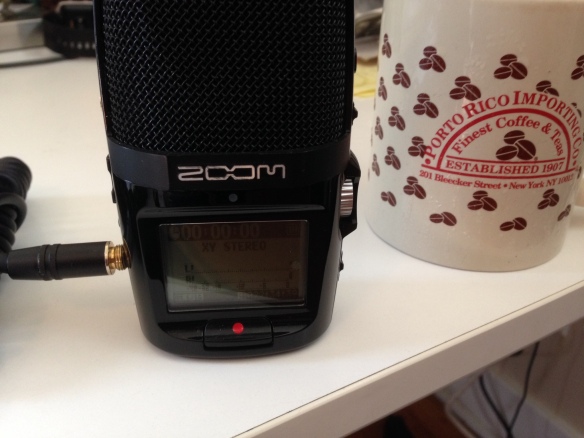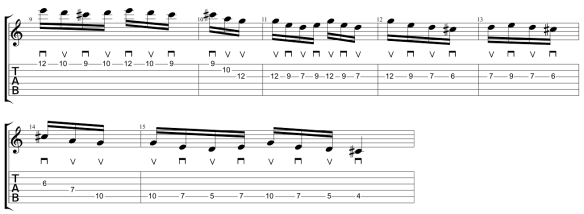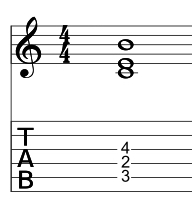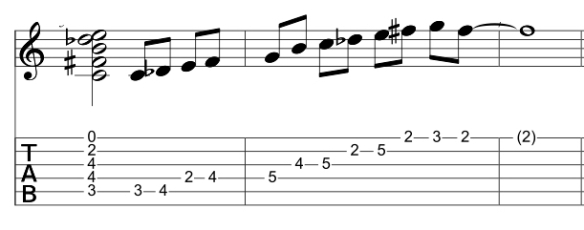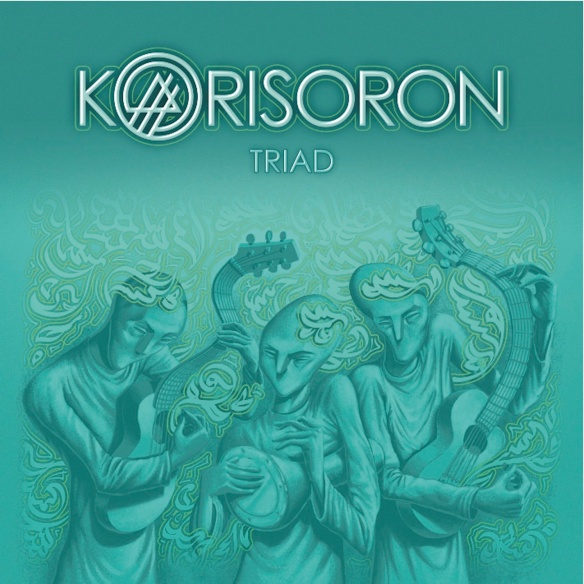My apologies to any regular readers of this blog as I haven’t posted in a while. I’ve been continuing the research I’ve been doing and involved in a few new projects including forming and writing material for a new loosely Afro Beat / Mail / North African inspired project (tentatively called “Embe Esti”) and working really hard on the final steps of a Middle Eastern / North African film festival (Festival Cinema Invisible (FCI) that now, several years after starting being involved in it, I find myself the Artistic Director of. (For those of you in the Upstate New York area, you can find out more about our 2-day / 58 film festival at Proctor’s GE Theater in Schenectady NY April 22nd and 23rd here.)
But mostly, I haven’t posted anything because, frankly, while I’ve had a lot of thoughts over the last few months, I haven’t had a pressing need to say anything.
With Allan Holdsworth’s passing I have a thought worth sharing, although perhaps not the most predictable one.
If you aren’t familiar with Holdsworth’s name I’d simply recommend Googling it and checking out any performance videos of him. It may even be understating it to say he’s the most important fusion guitarist in history.
The thing that immediately strikes me, on watching (or listening to) any of his playing again, is not his incredible harmonic mastery, or his other worldly fluidity, touch, phrasing or tone.
It’s the singularity of what he was doing.
No one really sounded like him. Even now, there are a number of people that have copped elements of his style (like his legato technique, or his vibrato arm phrasing) but, like Shawn Lane (a player who said that his attending a U.K. concert as a kid and seeing Holdsworth was a watershed moment in developing his own singular guitar style), he developed a deeply personal voice that others could do impressions of, but never really master.
Like Lane, he also died with very real financial issues. Consider for a moment a quote from this obituary:
“No official cause of death has been disclosed. In a Sunday afternoon email, Holdsworth’s publicist, Dan Perloff, told the Union-Tribune: ‘I talked to his daughter this morning and she told me that his roommate called her and her sister to tell them that Allan hadn’t come out of his room in a very long time, and when they knocked down the door they found him dead…’”
Holdsworth was 70 years old. The most important fusion guitarist ever and also one of THE most important and influential electric guitarists in history with a career that spanned almost 50 years and saw 12 solo releases – was living with a roommate in what I’m purely and wholly speculating was necessity rather than choice – presumably to make ends meet. Googling “Holdsworth Yamaha” in an attempt to remember what gear he was using turned up a whole series of gear sold for him on Reverb.com in the last two years. He made no bones about this in the past. Many of his interviews over the last 30 years included at least some reference to the financial challenges he had in making a living by making his music. (This article from 1986 seems to be no less accurate in 2016).
I mention this for several reasons: (Note: This is not in any way a judgement of Holdsworth as a person or as an artist. Artistically, as a musician, I really think he’s untouchable and everything I’ve seen seems to indicate that he was a really good guy).
1. Talent alone will not save you. There are still people who believe that if they just do work hard that solely on the basis of excellence that they will rise to the top and receive popular acceptance. While Holdsworth rose to the top of his playing, he never experienced the mainstream recognition that he deserved.
2. (and this is the more controversial and likely the more important take away) There is sometimes a cost to being the first in anything substantial.
Holdsworth was so far ahead of the game that I don’t think that many people understood what he was doing. (Also true to some extent of Shawn Lane). Players after him copped elements of his style and were able to make it more accessible to listeners and received more mainstream (i.e. short term and financial) “success.” Holdsworth made it into the history book, but that in and of itself doesn’t pay the bills.
The Citizen Kane example:
A friend of mine saw Citizen Kane for the first time in the last year and told me that it was the most over-rated movie in history and they didn’t see what the big deal was. That reaction makes sense to me watching it now. To “get it” I think you’d need to watch it in context. If you watch other movies made at the same time, you’ll see that this film was completely different from anything else released at the time. There are film making and writing devices used that were never employed before that film. What happened (eventually) was the film was so influential that what was the avante-garde became part of the regular film making vocabulary. It’s easy to not get it now because so much of what you know as regular film making devices had its origins in that film. (And coincidentally, it’s the film that simultaneously launched his career and started it’s long decline).
For me, it’s the something similar with Holdsworth except that, as guitarists, we still haven’t caught up to fully integrating that into the guitar vocabulary.
When you’re at the start of something truly new – you get to blaze a path but the reality is that it may be a path that others find success on.
Holdsworth made the music he wanted but paid a terrible economic price for much of his career (by other means of example see some thoughts from Holdsworth himself on how far south a crowdsoucing campaign for a recent release went behind the scenes here (and/or as an alternative view, Gary Husband’s perception of the same events here)).
But there’s also a tremendous psychological toll being truly first takes as well because as Charlie Sexton once put it, “The beats so lonely – I’ll bet it’s lonely at the top.”
With each attempt to move forward can come crippling self doubt about the quality and/or validity of what you’re doing. It’s Nikolai Tesla being right when the rest of the world is wrong, and you need unbelievable callouses and self driven habits to overcome those obstacles to maintain any kind of inertia.
Earlier I spoke of Holdsworth’s voice on his instrument – a magnificent, nuanced and soulful voice that could move listeners with anything from expansive ethereal chording to angry snarling cries that seemed to burrow into, rub up against and burst out of the chords weaving around him. But the irony was where everyone else heard magnificent beauty – he heard potential mixed with self doubt. He heard music that was almost good enough….playing that was almost good enough…. Perhaps it was what drove him to push himself harder, to write new music. It’s a sign of other issues (fear, self doubt, etc.) and those things can tear you apart. And yet that is what many people face when they scale the mountain forging their own path – the tools that allow then to ascend the mountain are the same ones that can cause them to fall.
So what does that mean for the rest of us?
There’s a top NYC player I know of who splits a small apartment for his own little corner to practice and see students and create. He has name recognition, cover in trade publications etc – but is cash poor. That lack of creature comfort is the trade off for living in the city he feels he needs to be in doing what he wants and how he wants to do it.
Increasingly, this is what it means to be a professional musician for most people. Whose couch are you sleeping on? Is it more important to tour or to eat?
With this in mind I ask the following:
- What are your priorities?
- What is important to you? (Hint – the important things in life are the things you do.)
- What are you willing to do or give up to make the thing that means the most to you in the world happen?
What Holdsworth faced financially was simply ahead of the curve on many other musicians who, in the current gig economy, find themselves making all manner of compromises to make their music free of compromise itself.
If you’re willing to blaze a path, can you do it for the love of following what you feel you absolutely need to do or will you going to get bitter when (or if) others build on your groundbreaking efforts and move themselves forward?
Coda:
As of this writing there’s a Go Fund Me page to help cover Allan’s funeral (and other expenses). The irony of which is that only two days in has already passed its $20,000 goal and reached over $100,000 (and counting) with 2,570 people contributing. This is very likely more money that he ever made in any one year (much less in two days) of his career).
I wish he had that kind of financial support consistently throughout his career but I also hope that if he knew that so many people were moved by his music and contributed money it might make Allan happy. Or at least crack a telling smile.
To one of the greatest guitarists of all time – thank you for blazing the path for the rest of us!
Here’s a clip from 1974 to send you back to the shed:
(Check it out from about 28:00 – or so and trust me – his playing gets more ferocious as he gets older!)
As always, thanks for reading.
-SC


